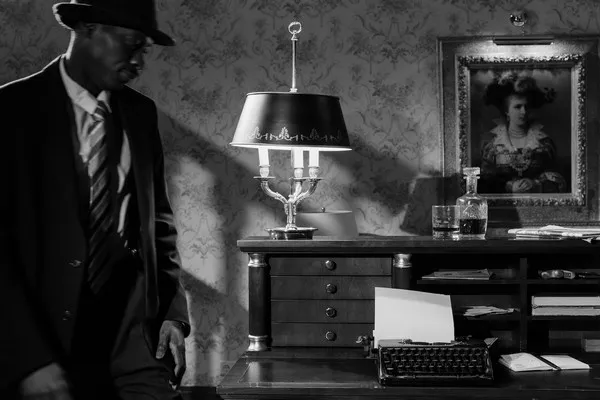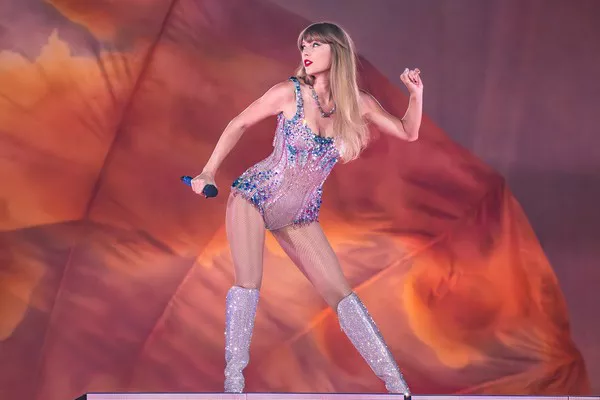Music is a universal language that transcends cultural boundaries, invoking emotions, memories, and shaping our perceptions of the world around us. One of the most fascinating and powerful aspects of music is its ability to transform and enhance the way we experience a scene, be it in a film, a video game, a theatrical performance, or even in our everyday lives. In this article, we will delve into the intricate relationship between music and scenes, exploring how music can change a scene in various contexts, the psychological mechanisms at play, and the artistry involved in creating soundtracks that captivate our senses.
The Synergy of Sight and Sound: Music in Film
In the realm of filmmaking, music plays a pivotal role in immersing the audience into the story. Filmmakers have long recognized how music can change a scene, heightening the emotional impact and guiding our interpretation of the narrative. Considered one of the pioneers of this art, the legendary filmmaker Alfred Hitchcock once said, “Music is an essential element of cinema.” It is a sentiment shared by directors, composers, and audiences alike.
The use of music in film is a delicate dance between the visual and auditory senses. A carefully chosen soundtrack can alter the way a scene is perceived, whether by building tension in a suspenseful moment, conveying the depth of a character’s emotions, or providing context and setting. The use of music can change a scene from mundane to unforgettable.
The Psychology of Music in Film
To understand how music can change a scene in film, we must delve into the psychology behind this phenomenon. Human emotions are complex and can be influenced by a wide range of factors, including visual and auditory stimuli. Music possesses the unique ability to tap into our emotional reservoirs, making us more susceptible to the intended emotional impact of a scene.
One of the key psychological mechanisms at play is known as emotional contagion. This phenomenon suggests that when we observe an emotion in others, we tend to experience a similar emotion ourselves. In film, music serves as the conduit for this emotional transmission. For instance, in a romantic scene, a well-composed piece of music with a lush, melodic quality can make the audience feel the blossoming of love just as deeply as the characters on the screen.
Furthermore, the tempo and dynamics of the music can manipulate the audience’s heart rate and breathing patterns. A slow, melodic piece can induce a sense of calm, while a fast-paced, percussive composition can increase tension and anxiety. Thus, music becomes a vital tool in the director’s toolkit to create specific emotional responses.
Creating Atmosphere Through Music
One of the most intriguing aspects of how music can change a scene is its ability to shape the atmosphere of a narrative. By selecting the right musical cues and motifs, filmmakers can transport audiences to different times and places, whether it’s the distant future, an ancient kingdom, or a bustling city.
Consider, for example, John Williams’ iconic score for “Star Wars.” The opening fanfare immediately transports the audience to a galaxy far, far away, with a sense of grandeur and adventure. The music sets the tone, guiding the viewer’s expectations and preparing them for an epic space opera.
In contrast, a film like “Amélie,” scored by Yann Tiersen, captures the whimsical charm of a quaint Parisian neighborhood. The accordion and piano melodies create a sense of nostalgia, whimsy, and romanticism, effectively altering the scene’s ambiance and making the ordinary seem extraordinary.
Character Development and Music
Beyond setting the scene and evoking emotions, music can also profoundly influence our perception of characters. In film, characters often have their own musical motifs, a recurring theme or melody that becomes associated with their identity. These motifs serve as auditory cues that help the audience connect with and understand the characters on a deeper level.
For instance, the haunting, ethereal theme associated with Darth Vader in “Star Wars” conveys a sense of foreboding, emphasizing his sinister nature. On the other hand, the whimsical, playful tune linked to the character of Jack Sparrow in “Pirates of the Caribbean” adds depth to his roguish and unpredictable personality. Music can change a scene by giving life to characters and providing insight into their inner worlds.
Evolving Techniques: Diegetic and Non-Diegetic Music
In exploring how music can change a scene, it’s important to distinguish between two essential categories of film music: diegetic and non-diegetic. Diegetic music refers to music that is part of the story’s world, audible to the characters within the narrative. In contrast, non-diegetic music is the more traditional film score, heard only by the audience.
Diegetic music can add layers of complexity to a scene by blurring the lines between the fictional world and the real world. Take, for instance, the famous dance scene in Quentin Tarantino’s “Pulp Fiction,” where the characters dance to Chuck Berry’s “You Never Can Tell” within the narrative. The diegetic music becomes a dynamic element of the scene, enhancing the overall experience and immersing the audience even further into the story.
Non-diegetic music, on the other hand, remains invisible to the characters. It can be used to provide commentary on the action, underscore the emotions of a scene, and serve as an omniscient narrator. This type of music often has a more significant impact on the audience’s emotional response, as it exists solely to guide and enhance their interpretation of the narrative.
The Artistry of Film Scoring
The process of creating a film score is a complex and artistic endeavor that requires a deep understanding of both music and storytelling. The composer’s role is to work in tandem with the director’s vision, enhancing the emotional landscape of the film.
Film composers face the challenge of crafting music that seamlessly integrates with the visual elements of the scene. They must carefully select instrumentation, tempo, and dynamics to create a perfect synchrony between sound and image. The result is a score that doesn’t merely accompany the film but becomes an integral part of its storytelling.
A prime example of this artistry is Hans Zimmer’s work on Christopher Nolan’s “Inception.” The score, particularly the iconic “Time,” not only enhances the emotional impact of the film but also serves as a thematic backbone, mirroring the complexity of the narrative’s dream world. Zimmer’s use of a relentless, ticking ostinato, combined with swelling strings and brass, adds a layer of urgency and depth to the story, illustrating how music can change a scene by underlining its central themes.
Music in Television: A New Frontier
The influence of music on visual storytelling extends beyond the silver screen. In the world of television, the role of music in shaping scenes has become increasingly significant. Television series often feature recurring themes and motifs that evolve over time, becoming an integral part of the show’s identity.
One notable example of this is Ramin Djawadi’s work on “Game of Thrones.” The composer masterfully crafted themes for various houses and characters, helping viewers emotionally connect with the sprawling, complex narrative. Each theme added depth to the story, enhancing the audience’s understanding of the characters and their allegiances. The power of these themes lies in their ability to transform a scene, making it instantly recognizable and emotionally resonant.
The impact of music in television extends to non-fiction as well. Documentaries and reality shows use music to heighten tension, underscore emotions, and guide the audience’s interpretation of the events. Music can change a scene by turning an ordinary moment into a poignant one or a suspenseful one, creating a more immersive viewing experience.
Video Games: Interactive Music Storytelling
The world of video games is a unique space where music not only enhances the player’s experience but also responds to their actions. Interactive music storytelling is a powerful tool that demonstrates how music can change a scene in real-time, based on the player’s decisions and the unfolding narrative.
In video games, music often shifts dynamically, adapting to the player’s choices, successes, and failures. For example, in the action-adventure game “The Elder Scrolls V: Skyrim,” composer Jeremy Soule created an adaptive soundtrack that responds to the player’s location and actions. As the player ventures into the wilderness or encounters enemies, the music seamlessly transitions to match the intensity of the moment, making the experience more immersive and engaging.
Furthermore, in story-driven games like “The Last of Us,” composer Gustavo Santaolalla’s evocative guitar-based score contributes significantly to character development and scene setting. The subtlety of the music underscores the emotional journey of the characters and how music can change a scene by guiding the player’s emotional engagement.
The Evolution of Music Streaming
The digital age has revolutionized the way we consume music, offering listeners the ability to create their own soundtracks for everyday life. Streaming platforms have become the modern equivalent of a film composer, allowing users to curate their personal “soundtracks” to accompany their daily experiences.
Whether we’re working out, studying, or driving, we have the power to select the music that suits our mood and activity. Just as in film and television, music can change a scene in our lives, enhancing our emotional states and influencing our perception of the world around us. The ubiquity of music streaming services has made music an integral part of our daily routines, underlining its profound impact on our experiences.
Live Performances: From Stage to Screen
Beyond recorded media, music’s transformative power extends to live performances, whether in the theater, opera, or ballet. These art forms leverage music to convey the depth of human emotion and the power of storytelling. Live performances offer a unique dimension in which music can change a scene, with the added element of a direct, immediate connection with the audience.
In theater, the combination of live music and acting creates an immersive experience for the audience. The music underscores the emotions of the characters, amplifying the narrative’s impact. A powerful example is the musical “Les Misérables,” where the soaring melodies and dramatic crescendos of songs like “I Dreamed a Dream” convey the characters’ struggles and aspirations.
In the world of ballet, composers like Tchaikovsky and Stravinsky have created scores that accompany the choreography, enhancing the visual storytelling and evoking emotions in the audience. When watching “Swan Lake,” the music becomes an essential component in conveying the romance and tragedy of the narrative.
Beyond Entertainment: Music in Real Life
While we’ve explored how music can change a scene in various forms of entertainment, its influence extends to our daily lives. From shopping malls to restaurants, public spaces often employ background music to create atmospheres and influence customer behavior.
In retail settings, studies have shown that the choice of music can impact shopping habits. Upbeat, energetic music can encourage customers to browse longer and make more purchases, while slower, softer music may have a calming effect. Businesses leverage these findings to craft the desired customer experience, demonstrating the practical application of how music can change a scene in real life.
Likewise, restaurants and bars use music to set the tone and create a specific ambiance. A bustling, lively venue might play energetic music to encourage socializing, while a more upscale restaurant may opt for classical or jazz to evoke sophistication and intimacy. The art of using music to enhance customer experience extends to the service industry and demonstrates how music can change a scene beyond the screen and stage.
The Role of Music in Advertising
Advertising is another realm where music takes center stage in scene-setting. Commercials often use music to establish a brand’s identity and convey a specific message. A well-chosen song can become synonymous with a product or a company, illustrating the extent to which music can change a scene, even in short, 30-second clips.
For instance, the iPod’s “Silhouette” campaign used a series of ads featuring silhouetted dancers grooving to catchy tunes. The use of music conveyed the product’s emphasis on music enjoyment and personal expression, transforming the act of listening to music with an iPod into a vibrant, kinetic experience.
Brands also harness music to elicit emotions and create memorable moments. The use of a sentimental, nostalgic song in a commercial can tug at viewers’ heartstrings, making the product or message more resonant. This is a testament to the power of music in influencing our emotions and perception.
Music as a Social and Cultural Force
Music’s transformative ability extends far beyond the realms of entertainment, advertising, and everyday life. It plays a significant role in shaping our society and culture. Music has been a driving force behind movements for change, inspiring individuals and communities to come together and make a difference.
Consider the protest songs of the 1960s, such as Bob Dylan’s “The Times They Are A-Changin'” and Marvin Gaye’s “What’s Going On.” These songs not only provided a soundtrack for social and political movements but also galvanized people to take action. Music can change a scene on a societal level, serving as a catalyst for change and uniting people around shared values and aspirations.
In addition to its role in protest and activism, music has the power to bridge cultural gaps and foster a sense of unity. Global events like music festivals, featuring diverse artists and genres, create a space where people from all walks of life come together to celebrate the universal language of music. The shared experience of live music transcends differences and demonstrates how music can change a scene on a global scale, fostering a sense of togetherness and understanding.
The Future of Music in Scene-Setting
As we look to the future, the relationship between music and scenes will continue to evolve. Advancements in technology will offer new possibilities for immersive storytelling. Virtual reality (VR) and augmented reality (AR) experiences will further enhance the connection between music and visuals, allowing users to be a part of the scene and interact with the music in unprecedented ways.
AI-driven music composition and selection will also play a significant role in the future of scene-setting. These technologies will analyze the emotional nuances of a scene and provide music that complements and enhances the narrative, creating a personalized and dynamic soundtrack for each viewer.
Furthermore, the boundary between creator and audience will continue to blur, allowing individuals to participate in the creation of music-driven narratives. Crowdsourced soundtracks and interactive storytelling will empower users to shape the way music can change a scene, making them active participants in the process.
In Conclusion
The power of music in changing a scene is undeniable and multifaceted. From the world of film and television to the realm of advertising and everyday life, music shapes our emotions, guides our perceptions, and enhances our experiences. Its ability to transport us to different times and places, deepen our understanding of characters, and evoke powerful emotions makes it an integral part of storytelling and human culture. As technology continues to advance, we can only imagine the innovative ways in which music will continue to transform and elevate our scenes, both on and off the screen. The enchanting dance between sight and sound will persist as an enduring testament to the enduring magic of music.

























